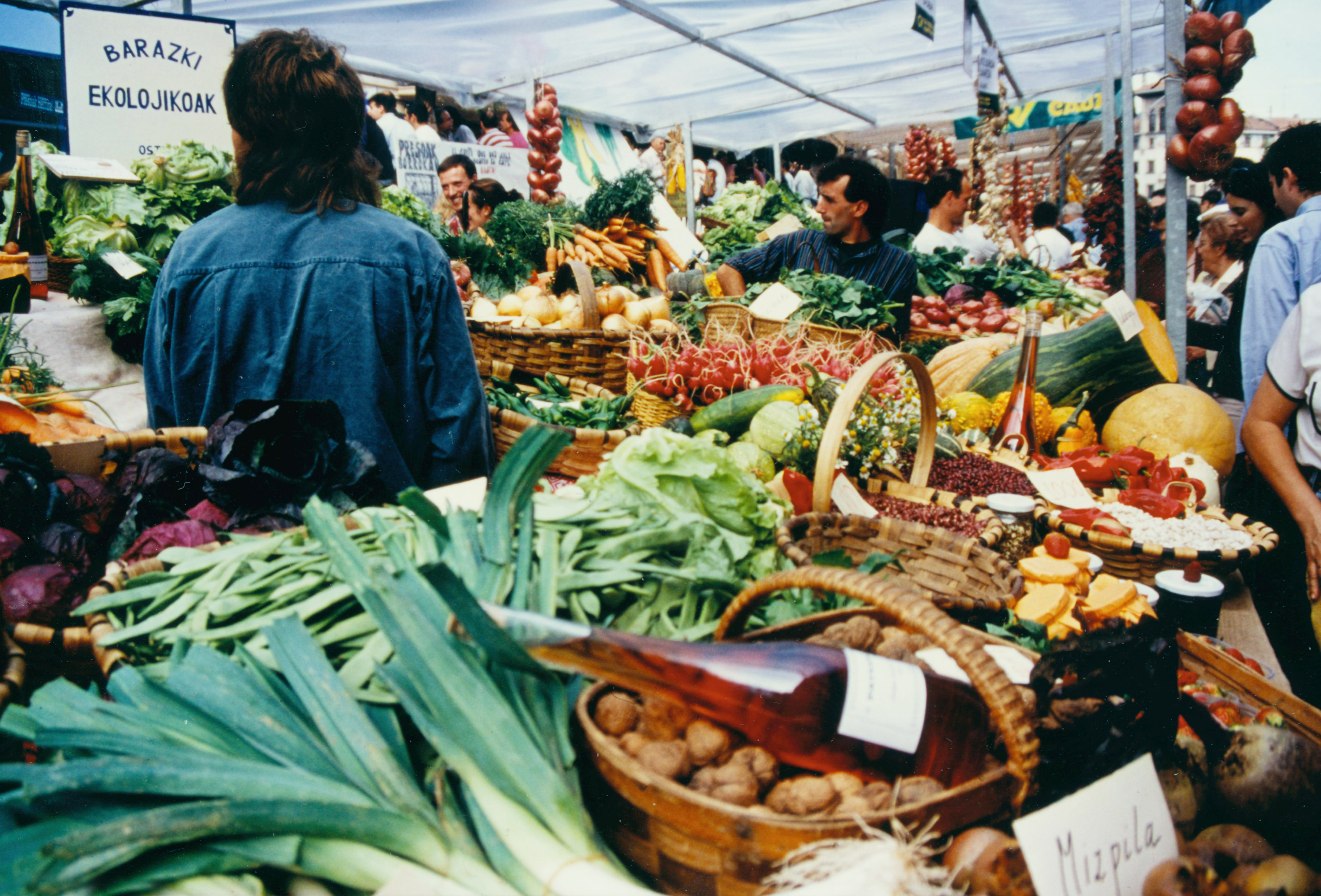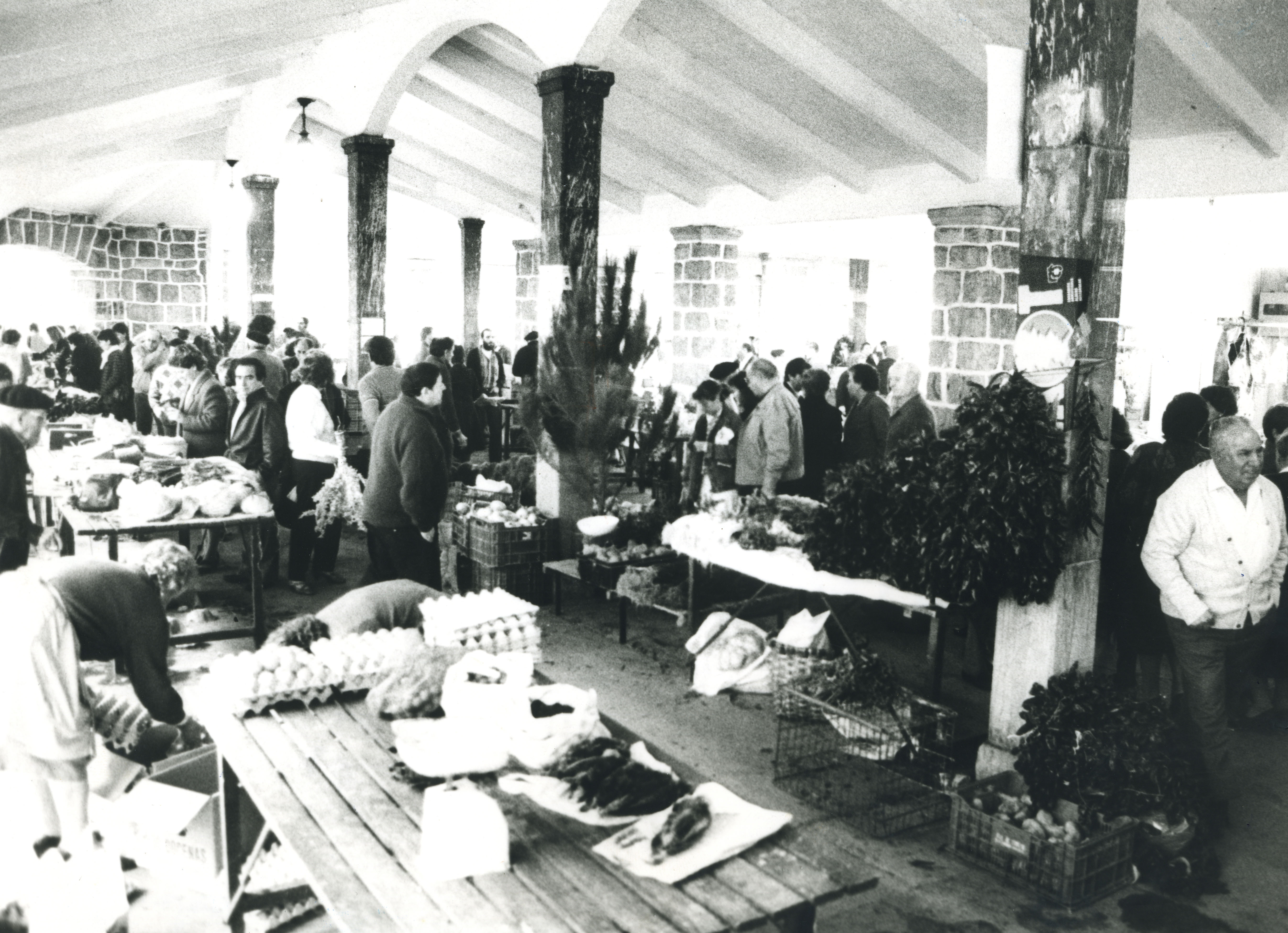Basque ethnography at a glance

Last Monday of October in Gernika-Lumo, 1996. José Ignacio García Muñoz. Labayru Fundazioa Photographic Archive.
Unique fairs and festivals popular with people from near and far are celebrated in many localities throughout Euskal Herria.
Fairs were commercial in character from the beginning. On certain days and places such periodic gatherings gained a particular relevance over time and came to enjoy great prestige. So is the case of the markets held on St Thomas’ Day in Bilbao and Donostia, the well-known Idiazabal cheese fair in Ordizia (Gipuzkoa), the fish fair at Bermeo port, and so on. The same goes for the last Monday of October fair in Gernika-Lumo.
The charter city of Gernika and the parish of Lumo united in the year 1882, the present-day city of Gernika-Lumo being the result of the merger. Yet each territory retained its own law, which only recently underwent considerable modifications.
As the principal municipality in the jurisdiction of Busturialdea, Gernika-Lumo has always been a centre of commerce and services. It is where residents from neighbouring villages and even further afield turn to for medical appointments, advisory and consultancy services, court, etc.
One of the most outstanding aspects of neighbourhood life in the city is the daily fair, and more particularly the Mondays’ fair. Locals have always considered this day of the week to be special. An old saying has it that in the city nobody does a stroke of work on a Monday: Lunes guerniqués, golperik ez, so as to make the week shorter and bearable.
In the past the fair on a Monday was a beautiful and colourful event. The market was very well attended. Farm women from the area flocked to the city, their donkeys loaded with fresh fruit and vegetables intended for sale to the general public, businesses and resellers. Late summer, early autumn was a main harvesting time: peas, peppers, onion, tomatoes, lettuce, all kinds of fruit… The marketplace —plazea or la plaza, as we know it— took on an extraordinary importance. There would also be street vendors and charlatans to liven up the day.
Every Monday in October was out of the ordinary, the first and the last above all. The first used to follow the Feast of Our Lady of the Rosary (7 October) and was later moved to the Monday after the first Sunday of the month. But the grandest of fairs is held on the last Monday of October, and when it falls between feast days as it does this year, it turns out to be nothing short of spectacular.
Pelota matches, oxen trials, fireworks and many more festive activities took place on both first and last Mondays in October. The focus and character of the occasion has changed though. Nowadays the fair site extends to the whole city and attendance is excessive, for those primitive agricultural gatherings have become folklore demonstrations that attract people from all over.
Segundo Oar-Arteta – Etniker Bizkaia – Etniker Euskalerria Groups
Translated by Jaione Bilbao – Language Department – Labayru Fundazioa
Reference for further information: Agriculture, the forthcoming volume of the Ethnographic Atlas of the Basque Country collection.


